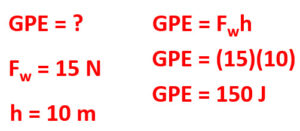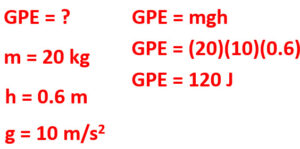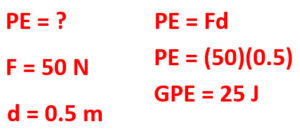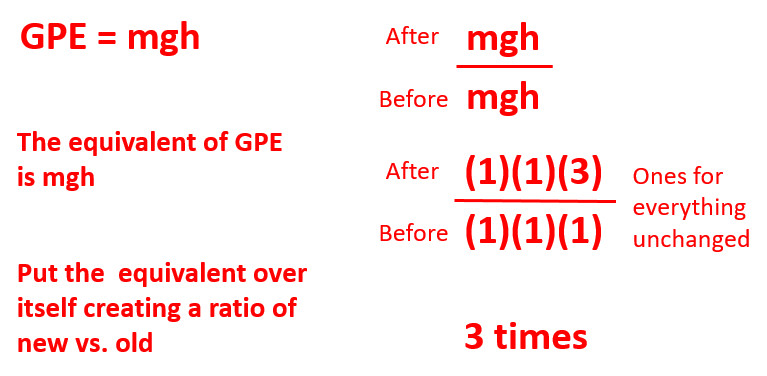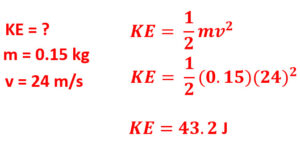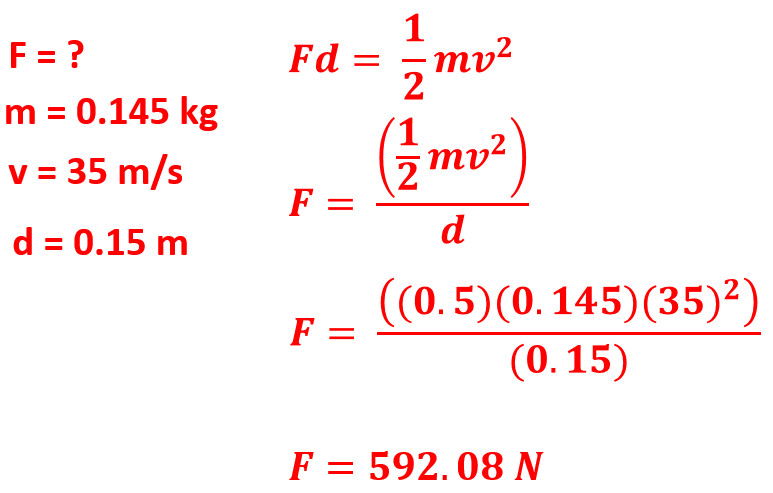Mechanical Energy
Mechanical energy is energy in motion (kinetic energy) or energy that can become motion (potential energy).
Total mechanical energy is the kinetic energy plus potential energy. Learn the equations for kinetic and potential energy and see various ways to use them.
Mechanical Energy Variables
| Name | Variable | Unit | Unit Abbreviation |
| Potential Energy | PE | Joule | J |
| Kinetic Energy | KE | Joule | J |
| Velocity | v | Meters per Second | m/s |
| Height or distance | h or d | Meters | m |
| Mass | m | Kilogram | kg |
| Weight | Fw | Newtons | N |
Forms of Energy
Different forms of energy we have in nature include:
- Chemical Potential Energy
- Mechanical (ME): Kinetic Energy (KE) & Potential Energy (PE)
- Light
- Heat
- Nuclear
- Electric
Work is done when transforming one form to another
In this unit we will concentrate on mechanical energy
Potential energy is stored in a location
- Energy is stored by the work pulling the string back a distance. The bow does the work once released.
- Energy is stored by work lifting the rock a height. Gravity does work on the way down.
Doing Work to Store Potential Energy
Remember work equals a force applied over a distance (W=Fd).
- You do work by applying a force over a distance
- Potential energy is equal to the work done (PE = W)
- Since work is equal to force times distance (W = Fd)
- The potential energy is equal to a force applied times the distance applied
PE = Fd
Here work is done applying a force on the bows string backwards a distance storing potential energy
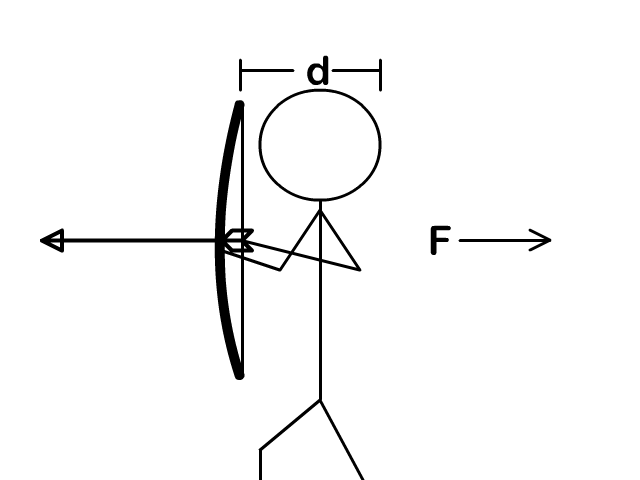
Work to Store Gravitational Potential Energy (GPE)
- Gravitational potential energy (GPE) equals weight of an object times the height it is lifted
- When given a weight and height: GPE = Fwh
- When given a mass and heightGPE = mgh
- g = 10 m/s2
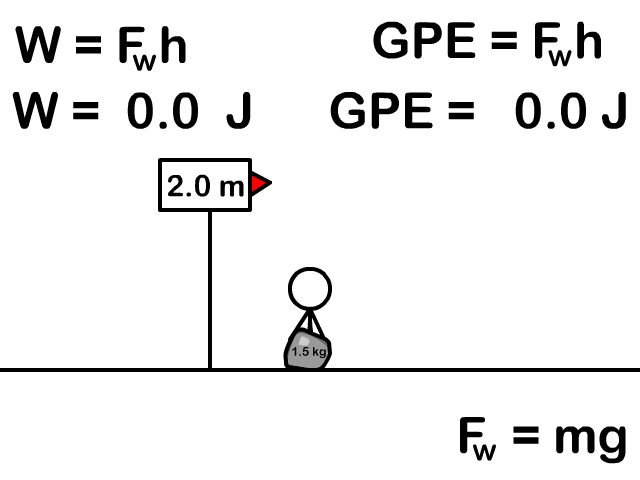
Work to Stop a Moving Object
Work is done to stop and object from moving and would be equal to kinetic energy (KE) we will see later in this page.
Work = KE
Work = Fd and KE = ½ mv2
Put together becomes a combined equation
Fd = ½ mv2
Example Problems:
Q1: How can you store gravitational potential energy (GPE)?
Q2: How much gravitational potential energy do you have when you lift a 15 N object 10 meters off the ground?
Q3: How much gravitational potential energy is in a 20 kg mass when 0.6 meters above the ground?
Q4: How much potential energy is stored when a force of 50 N is applied over 0.5 meter in the string of a bow?
Q5: How many did times greater is an objects potential energy when three times higher?
Kinetic Energy
Kinetic energy is energy in motion. The velocity of an object is very important in determining its kinetic energy. The formula for kinetic energy is as follows:
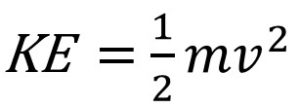
Kinetic energy and mass Is directly related. Kinetic energy and velocity is also but has an exponential effect because it’s squared.
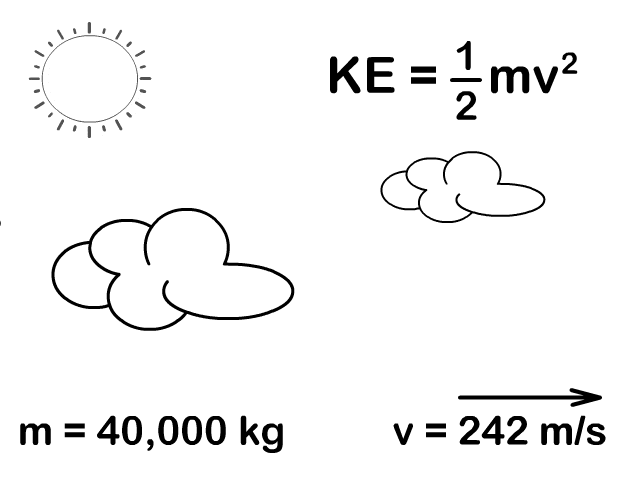
Work Done to Stop Motion
Work is also done to stop and object from moving and would be equal to kinetic energy (KE) we will see later in this page.
Work = Fd and KE = ½ mv2
Work = KE
Fd = ½ mv2
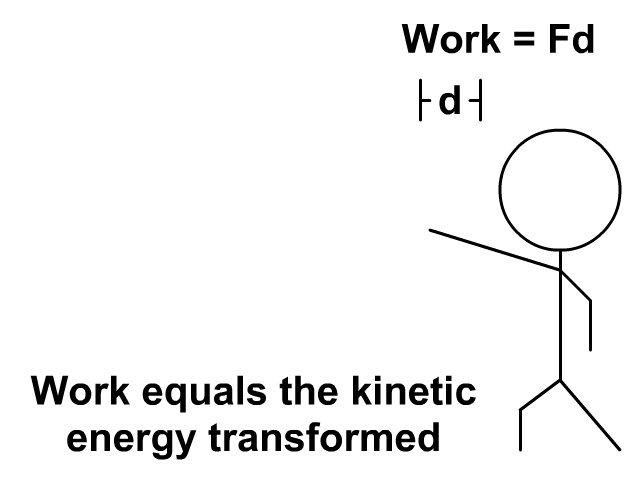
Example Problems
Q6: How much kinetic energy does a 0.15 kg ball thrown at 24 m/s have?
Q7: How much force is required to stop a 0.145 kg baseball going 35 m/s in 0.15 meters?
Q8: How many times greater is the kinetic energy of a ball that is going five times faster?
Mechanical Energy Problem Set
Clicking on check answer will give you the answer watch the end of the video at the top of the page to see the work to get the solution.
1. How much gravitational potential energy does a 35 kg boulder have when 30 meters off the ground?
2. How much potential energy is stored when a 55 N Box is lifted to a height of 1.5 m?
3. How much force is required to create 12 J of potential energy in a rubber band when pulled back 0.035 m?
4. How much kinetic energy is in a 2111 kg ford F-150 going 30 m/s down the highway?
5. How much force is required by the breaks to stop 2111 kg ford F-150 going 30 m/s down the highway in 15 meters?
6. How much work is required to catch a 0.145 kg baseball going 38 m/s?
7. How much more potential energy do you have if a rock is lifted 10 times higher?
8. How much more kinetic energy do you have if a rock is thrown 10 times faster?
Links
- Continue to the Next Section: Conservation of Energy
- Back to the Main Work, Power, Mechanical Energy, and Simple Machines Page
- Back to the Stickman Physics Home Page
- Equation Sheet

